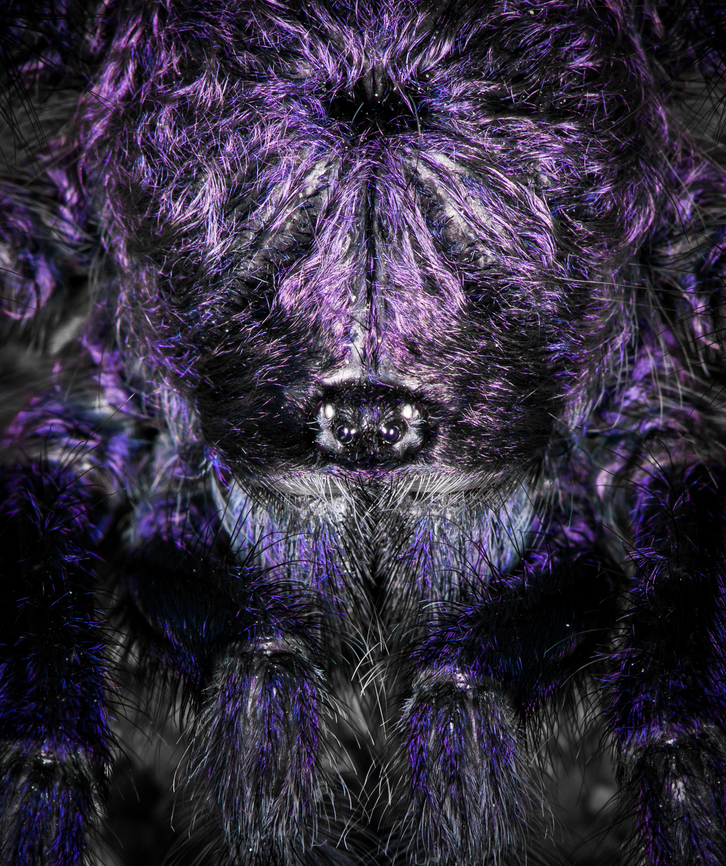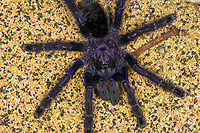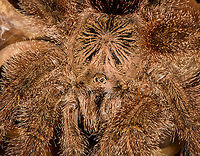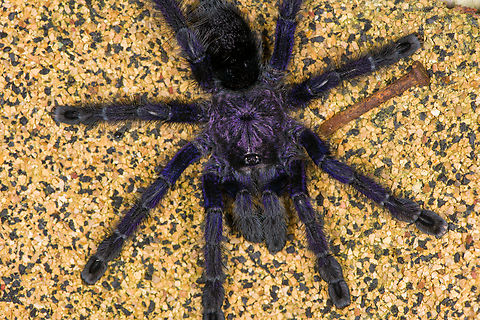 PromotedSpecies introCountry intro
PromotedSpecies introCountry intro
Purple Pinktoe Tarantula - head, Finca Heimatlos
(dramatized edit)
Here's the second tarantula found in Finca Heimatlos. I'm sharing one photo "as it was found" and one dramatized edit to emphasize the purple feature as well as some fun facts.
The intensity of the purple glare in their hairs depends on light conditions. The spider may appear as fully black in dim diffused light versus intensely purple under focused strong light.
Onwards to their eyes. Tarantula eyes seem really tiny compared to their body size and from a distance, they seem to have only two. In reality, they have 8 eyes like most spiders. The extra 6 eyes are all very closely arranged around the main eyes, and point in different directions.
This gives them a wide angle view, but their eye sight is still terrible. Their visual system is optimized for detecting motion and the difference between dark and light, where dark is considered safety. More often than not, a tarantula will pick flee instead of fight. Their perception of color is more limited than ours, specifically they cannot see reds. If your flash light has a red light mode, it's a great way to track them without stressing them too much.
Their true eyes are their hairs, which are able to detect the tiniest of movements made by small insects. These same hairs also act as their ears, they are able to detect the air vibration produced by sound.
They cannot turn their heads. Their body is rigid and pretty inflexible. Hunting is mostly a very fast forward running motion. A wall hunter like this won't jump. Because if they do, they would implode upon impact with the floor due to their very heavy exoskeleton.

In case you missed it, check out this other species in the same genus found at the same location:


"Avicularia purpurea", also called purple tree tarantula, Ecuadorian purple tarantula or Ecuador purple pinktoe, is a species of spider belonging to the family Theraphosidae.

comments (4)